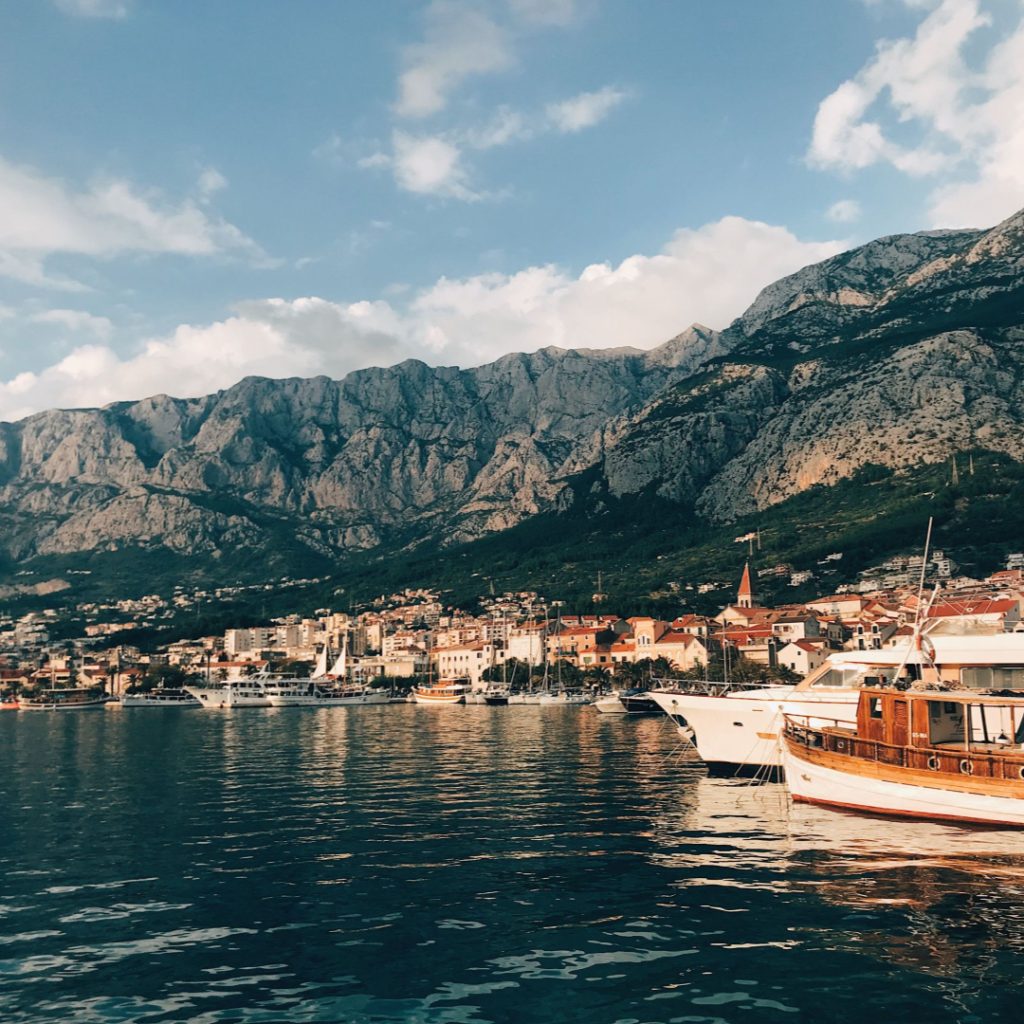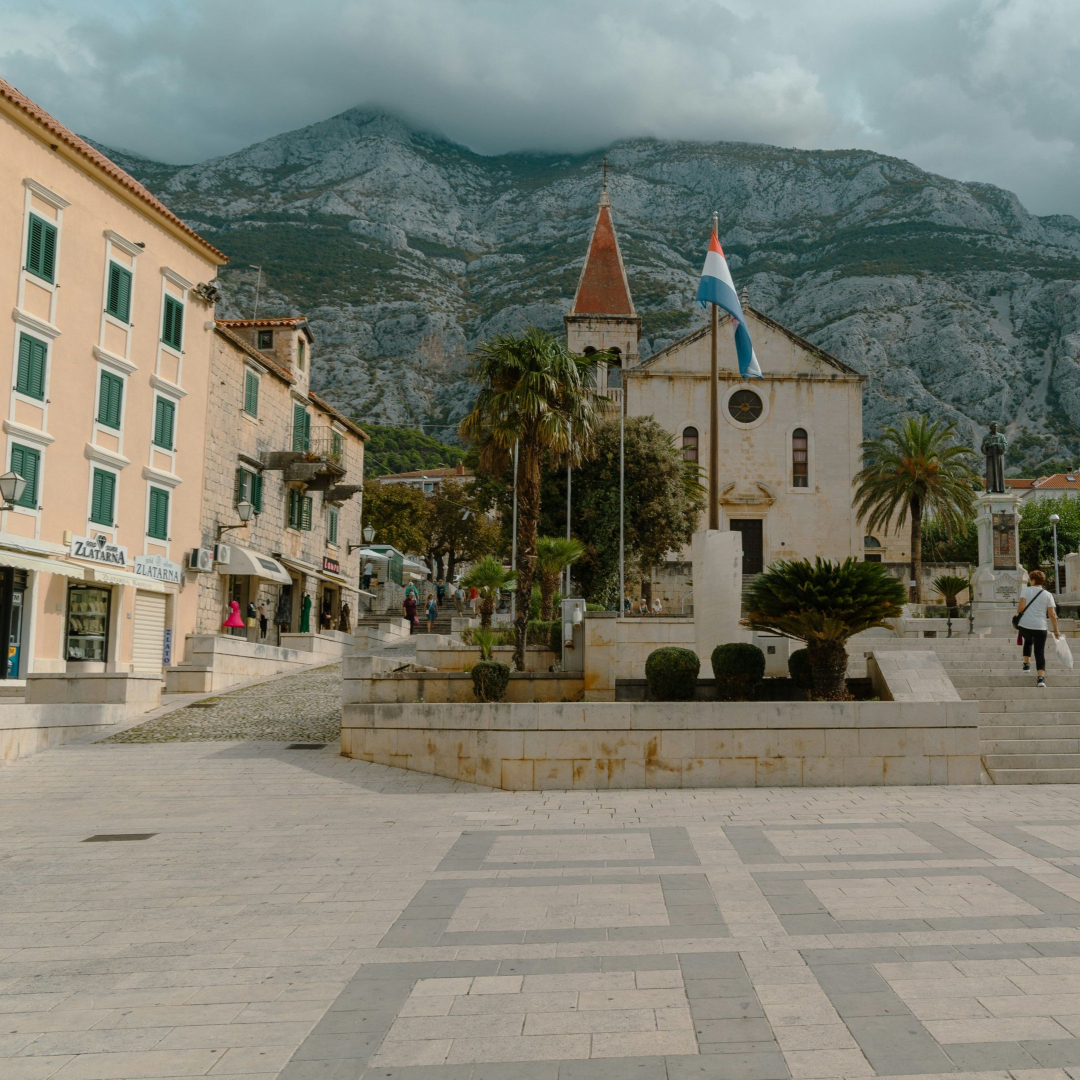The history of Makarska
The history of Makarska is a tapestry woven from prehistoric settlements, Roman influence, medieval battles and modern tourism. Makarska is a picturesque town located on the central Dalmatian coast of Croatia, known for its stunning views of the Adriatic, the dramatic backdrop of Mount Biokovo and its rich history. Its strategic position on the coast has made it a crossroads of civilizations and a place of frequent conflict and cultural exchange.

Prehistory and antiquity
The area around Makarska has been inhabited since prehistoric times. Archaeological evidence, including tools and remains of settlements, reveals that early people recognized the strategic and resource-rich nature of the area. The Illyrians, a group of ancient Indo-European tribes, were the first recorded inhabitants of the region. They established strongholds and lived from agriculture, fishing and trade.
With the expansion of the Roman Empire in the 1st century BC, the area was included in the Roman province of Dalmatia. The Romans built roads, settlements and villas, contributing to the development of a trade network along the Adriatic. Evidence of Roman presence, including ruins and inscriptions, can still be found in the area. During this time, the region became a thriving part of the Roman economic system, facilitating connections between the coast and the mainland territories.
Early Middle Ages
The fall of the Western Roman Empire in the 5th century AD led to a period of upheaval as various tribes and powers sought control of the Adriatic region. The Ostrogoths and Byzantium alternated in rule over the area, but by the 7th century Slavic tribes had begun to settle in the region, marking the early beginnings of Croatian cultural influence.
Makarska became part of the Neretva Principality (Pagania), a medieval Croatian state known for its naval power and piracy. The principality maintained its autonomy and resisted the influence of larger powers, including the Byzantine Empire and the Republic of Venice. During this period, the settlement was called Muccurum, of Phoenician origin, meaning a market (makar) or a spring (maqor), which characterizes this settlement with a port.
Venetian and Ottoman conflicts
In the late Middle Ages, Makarska’s strategic position made it a focal point of long-lasting conflicts between the Venetian Republic and the Ottoman Empire. In the 15th and 16th centuries, the Ottomans made numerous incursions into Dalmatia, captured Makarska, and incorporated it into their Bosnian Sandžak.
Under Ottoman rule, Makarska became a small administrative and commercial center. However, life was marked by instability, as Venetian forces constantly sought to reclaim the region. The population endured attacks, military occupation, and religious tensions, with many locals fleeing to Mount Biokovo or nearby islands during the conflicts.
The Peace of Karlovac in 1699 marked a turning point. Makarska, along with much of Dalmatia, fell to the Venetian Republic, ending Ottoman rule. The Venetians began to fortify the city and encourage economic recovery. Makarska grew as a coastal trading center, trading in agricultural products, salt, and maritime goods.
Austrian rule and modernization
With the fall of Venice in 1797, Makarska entered a period of change of government. It was first ceded to the Habsburg Monarchy under the Treaty of Campo Formia, briefly occupied by French forces during the Napoleonic Wars, and finally returned to Austrian control in 1815.
Under Austrian rule, Makarska underwent significant modernization. With the construction of roads and public buildings, including a harbor, the city was connected to larger markets and facilitated tourism. The Austrian authorities also established schools, cultural institutions, and a civic framework that laid the foundation for Makarska’s future development.
The 19th century saw the rise of tourism in the region. Visitors were attracted by Makarska’s natural beauty, Mediterranean climate and healing sea air. This period marked the beginnings of its transformation into a leisure destination.

20th century: Yugoslavia and the war
After World War I, Makarska became part of the Kingdom of Serbs, Croats and Slovenes, later renamed Yugoslavia. This period was marked by both economic growth and political tensions as Croatian aspirations for greater autonomy clashed with the centralist forces in Belgrade.
During World War II, Makarska was occupied by the Axis powers and became a site of resistance for the Yugoslav Partisans. The war left its mark on the city, but it remained resilient, joining the socialist Yugoslavia established in 1945. Under socialism, Makarska developed as a major tourist destination, with investments in hotels, infrastructure and cultural events attracting visitors from all over Europe. However, the city escaped major destruction and recovered quickly after the war.
Makarska today

Today, Makarska is one of Croatia’s leading tourist destinations. It boasts a picturesque old town filled with historical landmarks, such as the Church of St. Mark, a Venetian fountain and a Franciscan monastery that houses the famous town’s seaside promenade, palm-lined streets and pristine beaches attract visitors from all over the world.
Heritage and Culture
Makarska’s history is one of resilience and cultural synthesis. Over the centuries, it has absorbed the influences of the Illyrians, Romans, Byzantines, Slavs, Venetians, Ottomans and Austrians, each leaving a unique mark. Its heritage is celebrated through festivals, local cuisine and the preservation of historic architecture.
The surrounding Biokovo mountain range remains a symbol of Makarska’s enduring connection to nature and its historical role as a refuge in turbulent times. This natural and cultural heritage defines Makarska today, making it a prized jewel of the Adriatic.
Prepared by: S.O.S. English

